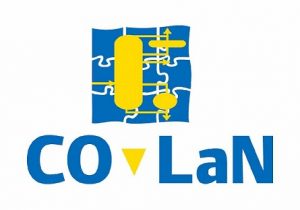

Dr BLAGOV presents first the charter of the Thermo SIG which has not evolved from last year, meaning that the task and responsibilities put on the SIG are still the same. Then the active contributors to the Thermo SIG activities are listed with Mark STIJNMAN (Shell Global Solutions) mentioned in a major role. Contributions by Dr Bjørn MARIBO-MOGENSEN (Hafnium Labs) and Dr Richard SZCZEPANSKI (KBC) are also noted and appreciated.
Dr BLAGOV gives next a high-level overview of the main activity of the Thermo SIG: the re-design of the Chemical Reactions interface specification. The core part, so the Chemical Reactions textual interface specification, is ready to be submitted to the CO-LaN membership in a Request For Comments. Two smaller parts have been separated from the core, one is the Custom Data interface specification, now published by CO-LaN, and the other is the Manager interface specification that Thermo SIG will develop in the next few months.
The Chemical Reactions interface specification is made of three major sections: one on Chemical Reactions, one on Chemical Phase Equilibria and the last one on multiple compound slates. This arrangement has not changed since last year, as reported at the CAPE-OPEN 2019 Annual Meeting.
SIG activities are typically targeted at both the maintenance and the extension of the CAPE-OPEN interface specifications under its purview.
Regarding maintenance, if no addition were made to the Errata & Clarifications document for version 1.1 of the Thermodynamic and Physical Properties interface specification, a Request For Comment was sent out to CO-LaN membership about two properties: dielectric constant and refractive index. These two properties present the peculiarity to depend from other conditions than just temperature, pressure, composition (which are used for other properties). Dielectric constant depends on frequency of an electro-magnetic field while refractive index depends upon the wavelength of light. Thermo SIG asked the CO-LaN membership to help in defining business cases before making any change to the Thermodynamic and Physical Properties interface specification in order to take these properties into account.
Then Dr BLAGOV details what has been done for the Custom Data interface specification. As of September 2020, the textual interface specification was not yet on line as a PDF to be downloaded but its implementation specification is available on the repository containing the CAPE-OPEN IDL (i.e. the specification transcribed in Interface Definition Language). As an outcome of the 2nd work order given to the contractors providing software services to CO-LaN, a new version of the CAPE-OPEN Type Library and Primary Interop Assembly will be available (target is end of October 2020) with Custom Data included, so that developers may make use of it, an action that Dr BLAGOV strongly recommends.
Dr BLAGOV urges the CO-LaN Members to spend time reviewing and commenting upon the Chemical Reactions interface specification. The document, after some further polishing, will be released to CO-LaN Members in a matter of weeks.
Dr BLAGOV urges also CO-LaN Members to complete the RFC on dielectric constant and refractive index. So far there is no compelling business case for considering these properties as a function of an additional condition. Also it is not clear yet if these properties are really taking part in the communications between CAPE-OPEN applications. If no business case is made, Thermo SIG will abandon modifications related to these properties.
Dr BLAGOV then details plans for the upcoming year. They focus first on the Manager interface, designed as a generalization of the Property Package Manager and the Chemical Reaction Package Manager. Developed to deals with some shortcomings of the Property Package Manager interface (some highlighted by Mark STIJNMAN in his presentation at the CAPE-OPEN 2019 Annual Meeting), it will be really a Common interface and not specific to thermodynamics. It needs to be published in order to complete the work on the re-design of the Chemical Reactions interface specification. Thermo SIG needs also to design the Material Manager which is there to replace the Material Template System that has proved to carry inadequate functionality. Last but not least, Thermo SIG needs to support the development of COBIA by adapting the interface specifications under its purview to CAPE-OPEN 1.2 as well as carry on work on errata and clarifications.
Dr BLAGOV concludes by encouraging CO-LaN Members to review the Chemical Reactions interface specification they will be receiving. It is a long document which may not be easy to read or really entertaining. Still only a thorough review will ensure its quality.
